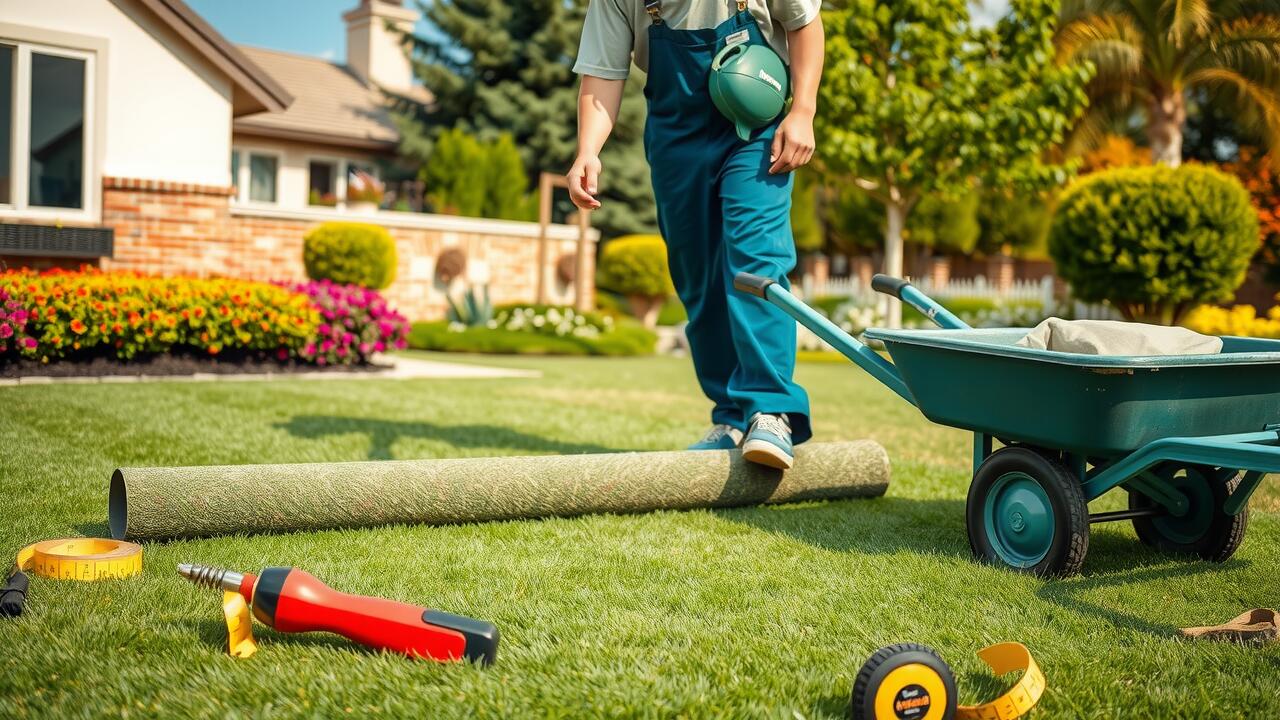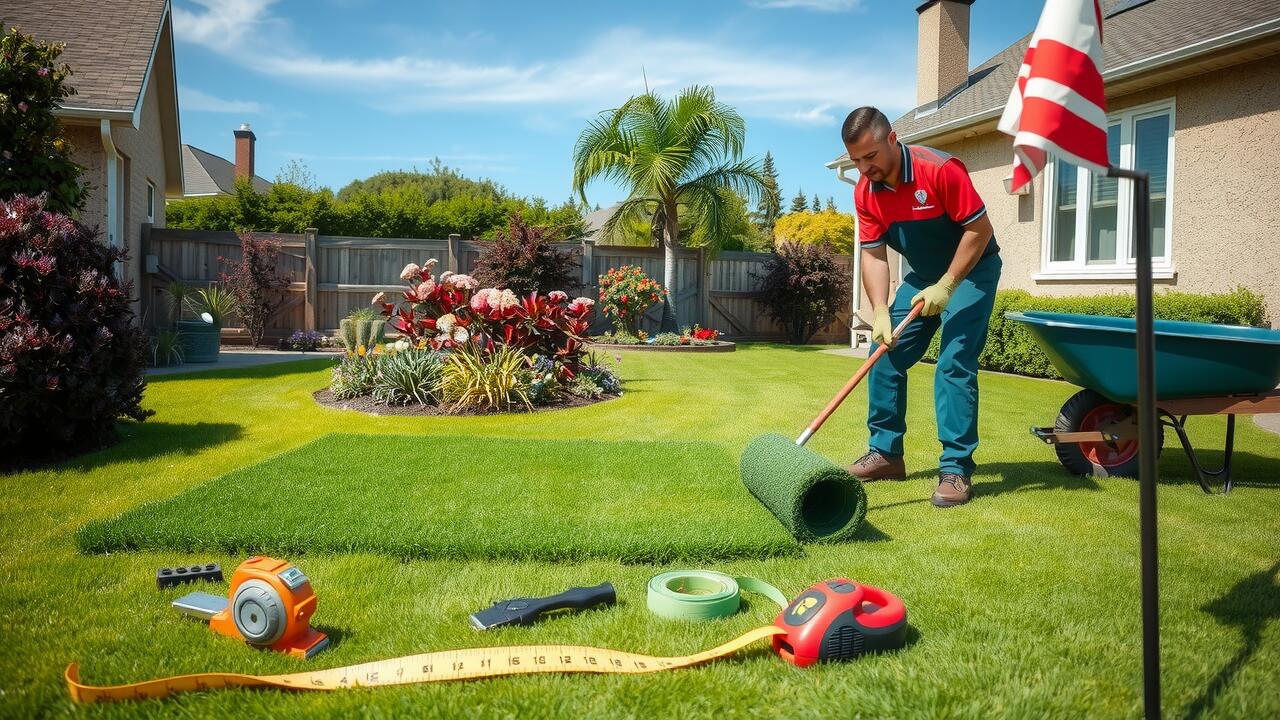
Drainage Problems
Artificial grass can encounter significant drainage problems that affect its overall functionality. When rainwater or irrigation collects on the surface, it may not always drain properly. This issue can lead to water pooling, creating muddy patches or even promoting the growth of mold and mildew underneath the grass where air circulation is limited.
Inadequate drainage can also reduce the performance of artificial grass, especially in areas that experience frequent rainfall. If water cannot escape efficiently, the result may be an unpleasant odor or deterioration of the turf material over time. Homeowners must consider the underlying base and installation practices to ensure proper water management when choosing artificial grass for their landscaping needs.
Water Runoff and Pooling
Water runoff and pooling can pose significant challenges for artificial grass installations. Unlike natural grass, which absorbs moisture and allows for proper drainage, artificial surfaces tend to become waterlogged if not designed with adequate drainage systems. Heavy rains can lead to excess water pooling on the surface, creating an unattractive and potentially hazardous environment. Homeowners may find that standing water becomes a breeding ground for mosquitoes and other pests.
Inadequate drainage solutions can also result in the erosion of the base material beneath the artificial grass. This erosion may affect the overall stability and durability of the lawn over time. If water cannot flow away properly, it may cause the surface to become uneven or even lead to damages that require costly repairs. Addressing drainage issues can necessitate additional planning and investment upfront to ensure the longevity and functionality of the artificial grass.
Chemical Exposure Risks
Artificial grass often contains various materials that may pose risks of chemical exposure. Many turf products are made from synthetic fibers, which can include lead or other harmful substances. These materials can break down over time, releasing toxins into the environment. Children and pets who play on artificial grass may be at higher risk of exposure to these chemicals, particularly if they have open cuts or abrasions on their skin.
In addition to the materials used in its production, the infill used in artificial grass products can also contribute to chemical risks. Some infill options, such as rubber from tires, may contain hazardous chemicals that can leach into the soil. This raises concerns about potential health effects, especially in residential settings where families and pets frequently interact with the grass. Awareness of these risks is crucial for homeowners considering artificial grass for their lawns.
Potential Toxicity of Materials
The materials used to manufacture artificial grass can pose potential toxicity risks. Many types of synthetic turf are made with substances that may contain harmful chemicals, such as heavy metals or volatile organic compounds. These materials can be sent into the environment, particularly when subjected to heat or wear over time. Concerns about exposure to these toxins are heightened for children and pets who frequently play on the surface.
Additionally, the infill used in artificial grass, often composed of rubber or foam materials, can also introduce health concerns. Some infill products have been linked to respiratory issues or skin irritations due to the release of particles or dust when disturbed. Property owners should be aware of the sources of their artificial grass and inquire about the safety measures taken during its production to minimize potential health risks.
Limited Lifespan
Artificial grass typically has a limited lifespan that can be influenced by various factors. Although manufacturers often claim that their products can last anywhere from 10 to 25 years, actual durability may vary based on usage, environment, and maintenance. UV exposure, heavy foot traffic, and extreme weather conditions can accelerate wear and tear, resulting in the material losing its aesthetic appeal and functionality over time.
Eventually, artificial grass will require replacement due to fading, matting, or other forms of deterioration. It may seem like a cost-effective solution initially, but the need to invest in new material after a certain period adds to the overall expense. Homeowners and facility managers should consider these longevity issues when evaluating whether artificial grass is the right option for their needs.
Longevity and Replacement Needs
Artificial grass is often marketed as a long-lasting solution for landscaping needs. However, the reality is that it typically has a lifespan of about 10 to 20 years, depending on factors such as usage, quality of materials, and installation. Over time, exposure to UV rays can lead to fading and degradation, while heavy foot traffic may cause wear and tear. Property owners may need to consider replacements sooner than expected due to visible signs of deterioration.
Replacement costs can be significant, particularly when installation and disposal of old material are factored in. Choosing a high-quality artificial grass can mitigate some of these issues, but it’s essential to balance cost with expected longevity. Regular maintenance can prolong the lifespan, yet the eventual need for replacement remains a consideration that should not be overlooked when investing in artificial grass for residential or commercial use.
FAQS
What are some common drainage problems associated with artificial grass?
Common drainage problems with artificial grass include water runoff and pooling, which can occur if the installation is not done properly or if the underlying surface does not allow for adequate drainage.
Are there any health risks related to chemical exposure from artificial grass?
Yes, there are potential health risks associated with chemical exposure from artificial grass, particularly if the materials used in its production contain harmful substances. It’s important to research the specific products and manufacturers to understand any risks involved.
How long does artificial grass typically last?
The lifespan of artificial grass can vary depending on the quality of the materials used, the level of foot traffic it receives, and maintenance practices. Generally, it can last anywhere from 8 to 15 years before needing replacement.
What should I consider when thinking about replacing artificial grass?
When considering replacement, it’s important to evaluate the current condition of the grass, its overall performance, and whether it is still meeting your needs. Additionally, consider the costs of removal and installation of new grass.
Is artificial grass a good option for all types of climates?
While artificial grass can be used in various climates, it may not perform optimally in extreme temperatures. In very hot areas, it can become excessively hot to the touch, and in colder climates, it may not provide the same aesthetic appeal as natural grass.
